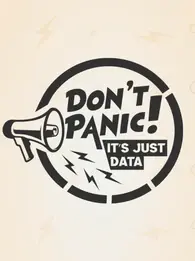
When I ask data leaders what their strategy is for creating a data-driven organization, most say that self-service is a key driver. They believe that if business users can service their own data needs, they will make timely, data-driven decisions. Furthermore, they believe that the way to empower business users is to give them a self-service analytics tool and appropriate training (i.e., data literacy).
I wish implementing self-service was this straightforward. But it is not. You can’t implement self-service with a tool, and no amount of data literacy can overcome other issues that business users face when using data. That’s because self-service is not a tool; it’s the outcome of doing everything else right in your data environment.
Self-service is not a tool; it’s the outcome of doing everything else right in your data environment.
Self-Service Done Wrong
Self-service-as-a-tool often backfires. When data leaders equip business users with visual analytics tools, there are two unfortunate consequences.
First, power users flood the organization with reports and dashboards, which often contain conflicting data and metrics. This creates confusion among business users, who don’t know which report or dashboard to trust. As a result, they ask the data team to create new ones for them.
Second, business users forget how to use the new tool or find it too complicated to get the answers they want in the format they desire. Once again, they ask the data team to create a custom report or dashboard for them. They also become territorial about their custom reports and fight anyone who attempts to standardize their metrics and calculations.
So, the downside of self-service is chaos. There are more reports than ever, but people trust the data less; more people are empowered, but the data team still creates custom reports. Moreover, top executives are mad as hell because they can’t get answers to simple questions about their business because the data never adds up.
Self-Service Done Right
Self-service is hard to implement because it comes at the end of a long line of improvements to the data program. Starting with self-service is often a recipe for failure.
Before implementing self-service, data leaders need to focus on designing the right data architecture, the right data governance program, the right operating model, and the right project delivery methodology. Once those things are in place, business users can have a successful experience with a self-service analytics tool and their training might bear fruit.
1. Data architecture done right. A good data architecture delivers data to users in the form and manner they want without much effort on their behalf. This requires a zone-based data environment and rigorous governance to ensure data goes into the right zones and is transformed appropriately. It also requires establishing standards for data ingestion, preparation, access control, and quality management and then “deputizing” select power users to implement those standards in their own domain with oversight. (See “A Reference Architecture for Self-Service Analytics.”
2. Data governance done right. Robust data governance requires a strategy and roadmap to establish a data governance council, prioritize capabilities to govern, assign and train data owners and stewards, implement and curate a data catalog, and establish policies, procedures, and standards. This takes a lot of work but is best done iteratively by use case by embedding data governance tasks within a project plan. We call this approach “just in time” data governance. (See “Modern Data Governance”)
3. Operating model done right. The right operating model ensures the enterprise data and analytics function has the right teams, roles, staff, and reporting relationships. It also assigns individuals on the enterprise team to different business domains to maintain strategic and tactical relationships with them. This enables the data team to gain valuable domain knowledge and proactively meet business needs. A good operating model also “deputizes” power users to build data pipelines after training them on enterprise standards. And it gives power users easy access to coaching and support via office hours and other means. (See “Operating Models for Data & Analytics: How to Align Resources Across the Enterprise.)
4. Product delivery done right. Even when self-service has taken root, the enterprise data team still needs to build solutions. Only the data team can build cross-domain or enterprise solutions and some domains don’t have the skills or interest to build their own reports and dashboards. To avoid a backlog of requests, the enterprise data team needs an efficient method for ingesting, evaluating, and approving development requests and then building data products or solutions that meet business needs. An efficient delivery methodology reduces data backlogs and breeds confidence in the data team. (See “A Guide to Data Products: Understand, Plan, Implement”)
Here's a scenario of how these four components work together to foster self service and create a data-driven organization:
First, “deputized” power users access authorized data via a data zone or semantic layer and create and publish data sets using standards established by the enterprise data team.
Subject matter experts (SMEs) are assigned to monitor the quality of domain data and curate metadata in a data catalog, increasing data discoverability and trust.
Business and technical review boards comprised of SMEs evaluate new reports and dashboards for data consistency and adherence to standards, authorizing a watermark or seal on approved reports.
Ambitious business users who to use data to create dashboard or create and run ad hoc queries can watch online video tutorials, ask questions of a local data coach, or schedule time with an enterprise expert during office hours.
If the request is too complicated to be built locally, business users submit a ticket to the data team and can monitor the progress of the request through the project approval pipeline.
If the project is approved, the development team (enterprise or domain) uses an agile approach with epics, user stories, standups, sprints, and debriefings to deliver solutions users want quickly.
Conclusion: Create a Data Strategy
Each of the four components above is a major initiative. And each is intertwined with the others. Organizations must deploy the four in parallel to build a foundation for self-service and become a data-driven organization.
The only way to sort through the myriad initiatives and tasks required to successfully implement self-service is to develop a data strategy. A data strategy defines goals, roadmap, resources, technology, people, and processes required to become a data-driven organization. With a data strategy, organizations can lay the foundation for self-service that empowers business users without creating chaos. See A Data Strategy Guidebook: What Every Executive Needs to Know” and “Constructing Your Data Strategy: A Business and Technical Foundation for Success” (tutorial slide deck).
So, if you or a colleague are tempted to think that a tool will empower business users and break the proverbial data bottleneck, think again. You have a lot of work to do before the shiny new tool can deliver on the promise of self-service!












